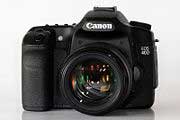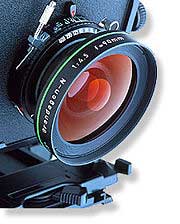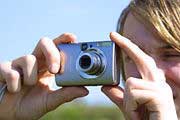Controlling the photographic exposure and renderingCamera controls are inter-related, the total amount of light reaching the film plane (the "exposure") changes with the duration of exposure, aperture of the lens, and focal length of the lens (which changes as the lens is zoomed). Changing any of these controls alters the exposure. Many cameras may be set to adjust most or all of these controls automatically. This automatic functionality is useful in many situations, and in most situations to occasional photographers. The duration of an exposure is referred to as shutter speed, often even in cameras that don't have a physical shutter, and is typically measured in fractions of a second. Aperture is expressed by an f-number or f-stop (derived from focal ratio), which is proportional to the ratio of the focal length to the diameter of the aperture. If the f-number is decreased by a factor of Exposures can be achieved through various combinations of shutter speed and aperture. For example, f/8 at 8 ms (=1/125th of a second) and f/5.6 at 4 ms (=1/250th of a second) yield the same amount of light. The chosen combination has an impact on the final result. In addition to the subject or camera movement that might vary depending on the shutter speed, the aperture (and focal length of the lens) determine the depth of field, which refers to the range of distances from the lens that will be in focus. For example, using a long lens and a large aperture (f/2.8, for example), a subject's eyes might be in sharp focus, but not the tip of the nose. With a smaller aperture (f/22), or a shorter lens, both the subject's eyes and nose can be in focus. With very small apertures, such as pinholes, a wide range of distance can be brought into focus. Image capture is only part of the image forming process. Regardless of material, some process must be employed to render the latent image captured by the camera into the final photographic work. This process consists of two steps, development, and printing. During the printing process, modifications can be made to the print by several controls. Many of these controls are similar to controls during image capture, while some are exclusive to the printing process. Most controls have equivalent digital concepts, but some create different effects. For example, dodging and burning controls are different between digital and film processes. |
 , the aperture diameter is increased by the same factor, and its area is increased by a factor of 2. The f-stops that might be found on a typical lens include 2.8, 4, 5.6, 8, 11, 16, 22, 32, where going up "one stop" (using lower f-stop numbers) doubles the amount of light reaching the film, and stopping down one stop halves the amount of light.
, the aperture diameter is increased by the same factor, and its area is increased by a factor of 2. The f-stops that might be found on a typical lens include 2.8, 4, 5.6, 8, 11, 16, 22, 32, where going up "one stop" (using lower f-stop numbers) doubles the amount of light reaching the film, and stopping down one stop halves the amount of light.

